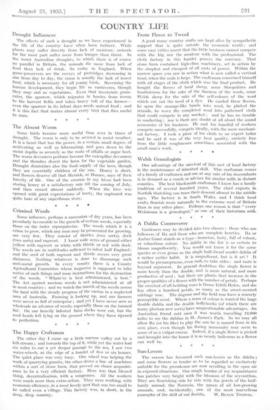From Fleece to Tweed
A good many country crafts are kept alive by sympathetic support that is quite outside the economic world ; and some easy critics assert that the little business cannot compete with the big, nor the amateur with the professional. The cloth factory in this hamlet proves the contrary. That stone barn contained high-class machinery, set in action by the simplest and cheapest of all sorts of power. Within the narrow space you saw in action what is now called a vertical trust, when the scale is large. The craftsman concerned himself with all stages of the cloth which was the final product. He bought the fleeces of local sheep, some Shropshires and Southdowns for the sake of the fineness of the wools, some Welsh sheep for the sake of the self-colours of the wool which cut out the need of a dye. He carded these fleeces, he spun the sausage-like bands into wool, he plaited the strands, he wove the completed wool into patterned cloth that could compete in any market ; and he has no trouble in marketing ; nor is there any doubt at all about the sound economies of his business. He and his handful of workers compete successfully, compete ideally, with the more mechani- cal factory. I took a piece of his cloth to an expert tailor and he said it was of the very best quality, entirely free from the little roughnesses sometimes associated with the small man's work.


































 Previous page
Previous page